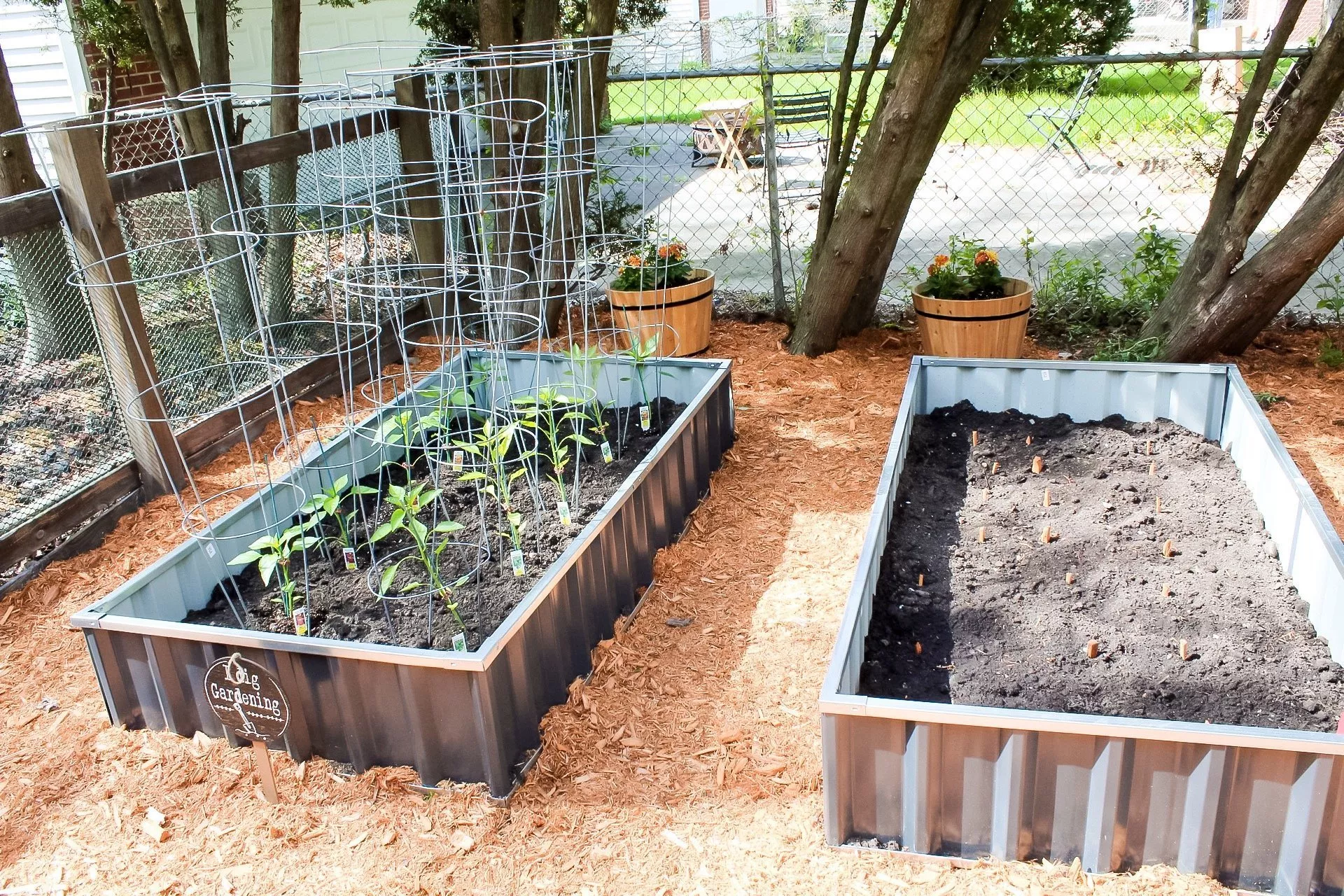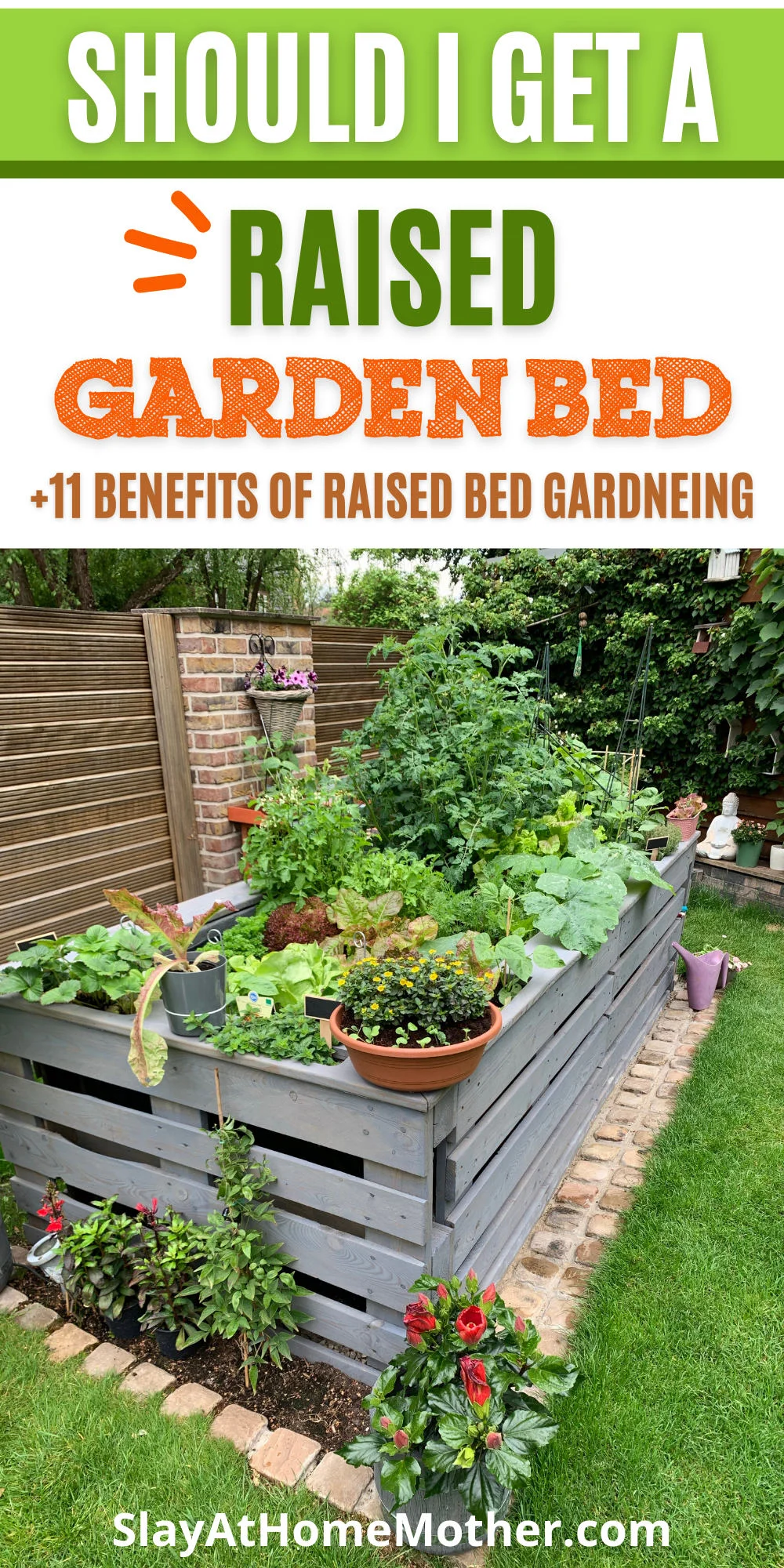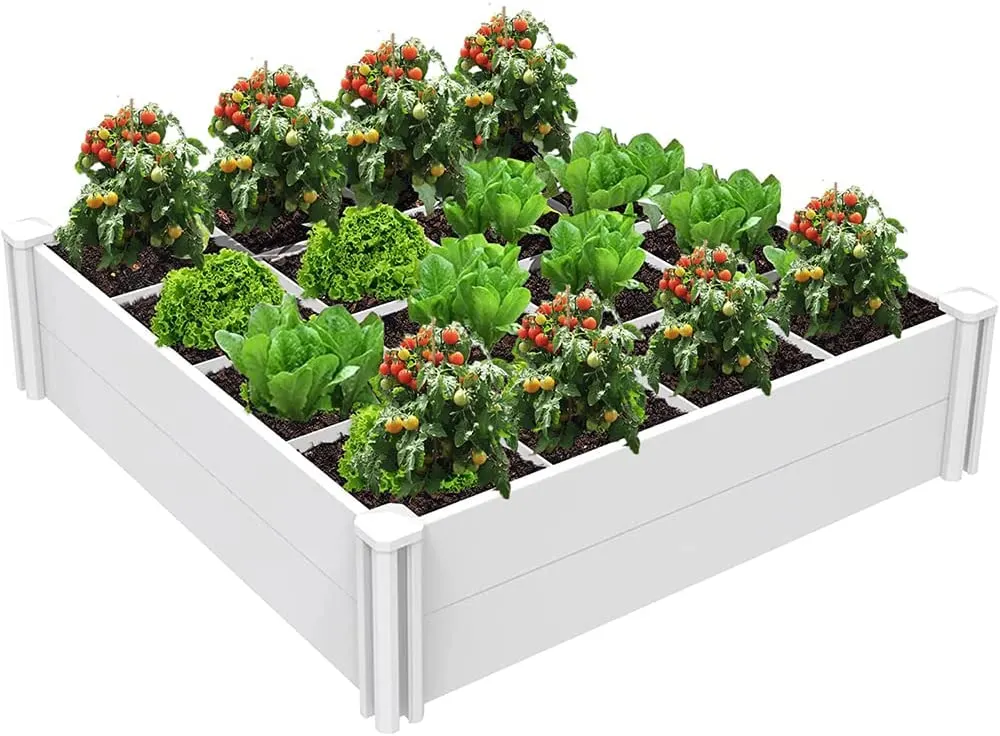Thinking of using raised garden beds for your vegetables this year? Here are 11 benefits to implementing raised bed gardening, as well as some of our top picks…
Benefits Of Using Raised Garden Beds
Raised garden beds make it easier to grow vegetables and have many benefits.
If you’re thinking about using raised garden beds in your yard this season but aren’t sure if they’re right for you, read on to see the many benefits they offer…
*This post contains affiliate links, however, all opinions are my own, as always.
Raised Garden Beds Have Better Water Retention
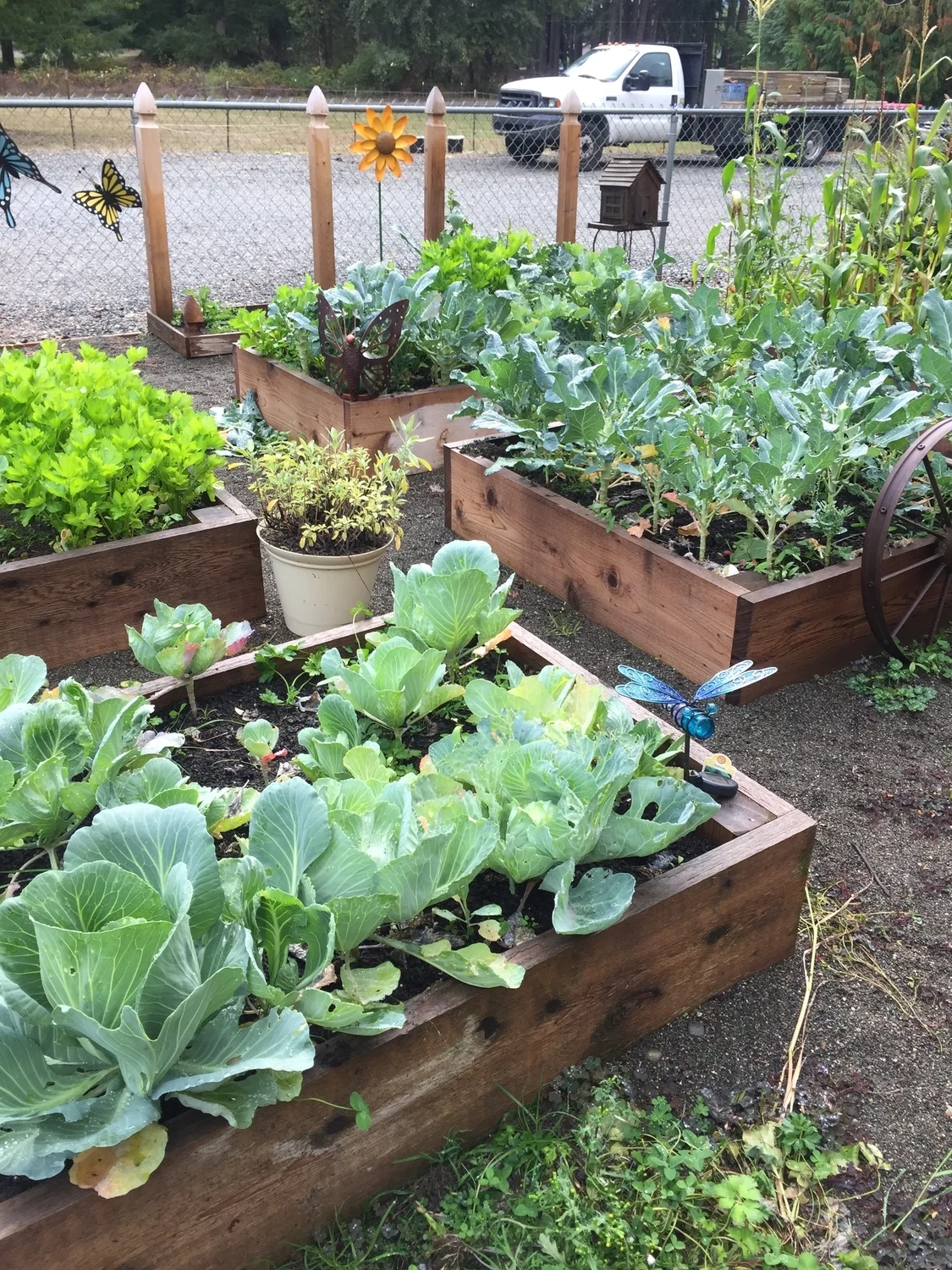
Did you know that raised garden beds can help you conserve water?
It’s true!
You’ll Have A Greater Yield
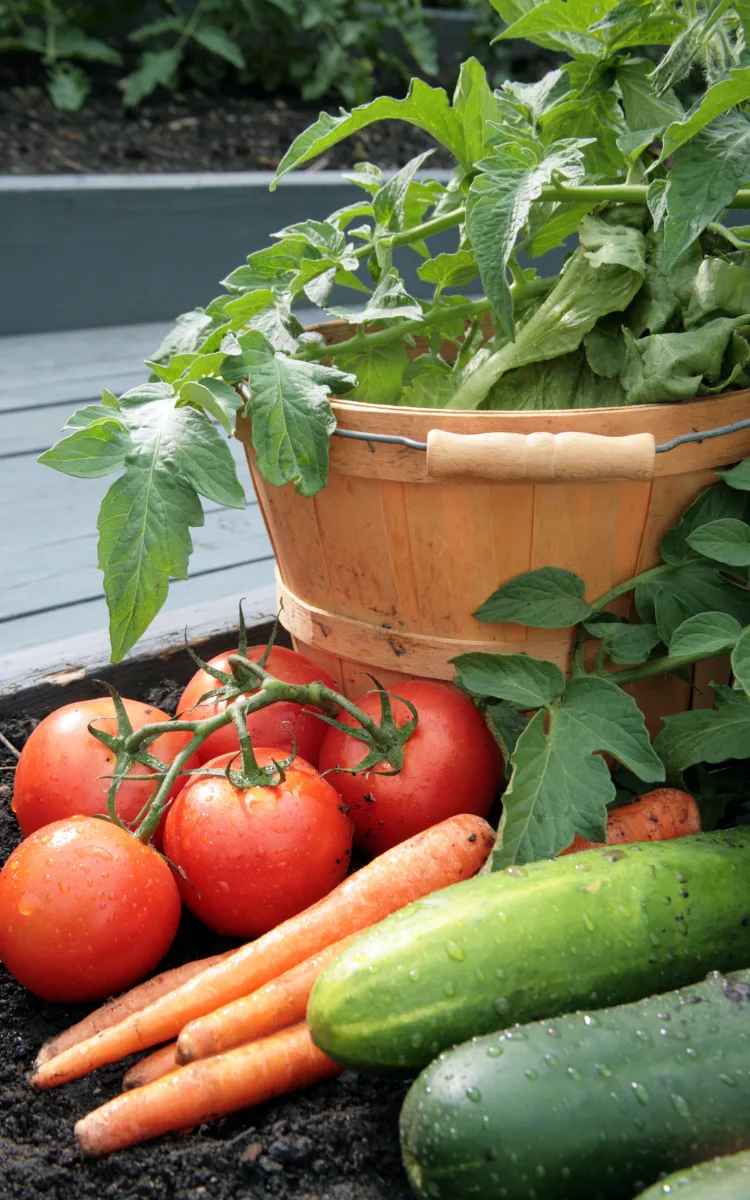
The soil in raised beds warms up faster in spring, so you can plant earlier.
And because the soil is loose, plants grow better: their roots get plenty of oxygen and water. Soil compaction is not a problem either (so you can kneel without fear!), because there are no footpaths through your garden.
Draining is also much better. If the bed is wide enough, you don’t even need drainage holes in the bottom: excess water will simply flow over the edges.
You have more control over the quality of your soil too: it’s easier to amend it as needed with compost and/or manure every year (if you use a deep bed).
Raised beds are easy to modify into attractive shapes that fit around objects like trees or playground equipment, or hide things like air conditioners and utility meters—even an ugly fence! They’re great for landscaping when used with benches and trellises.
And did I mention how easy they make weeding?
There are fewer weeds in raised beds to start with, because seeds blow around less easily inside them, and you don’t have to walk on them—which means fewer seeds germinate when they’re stepped on!
It’s also easier to apply fertilizer (organic or chemical) and water evenly across a raised bed than rows on level ground.
You’ll Have Less Weeds To Deal With
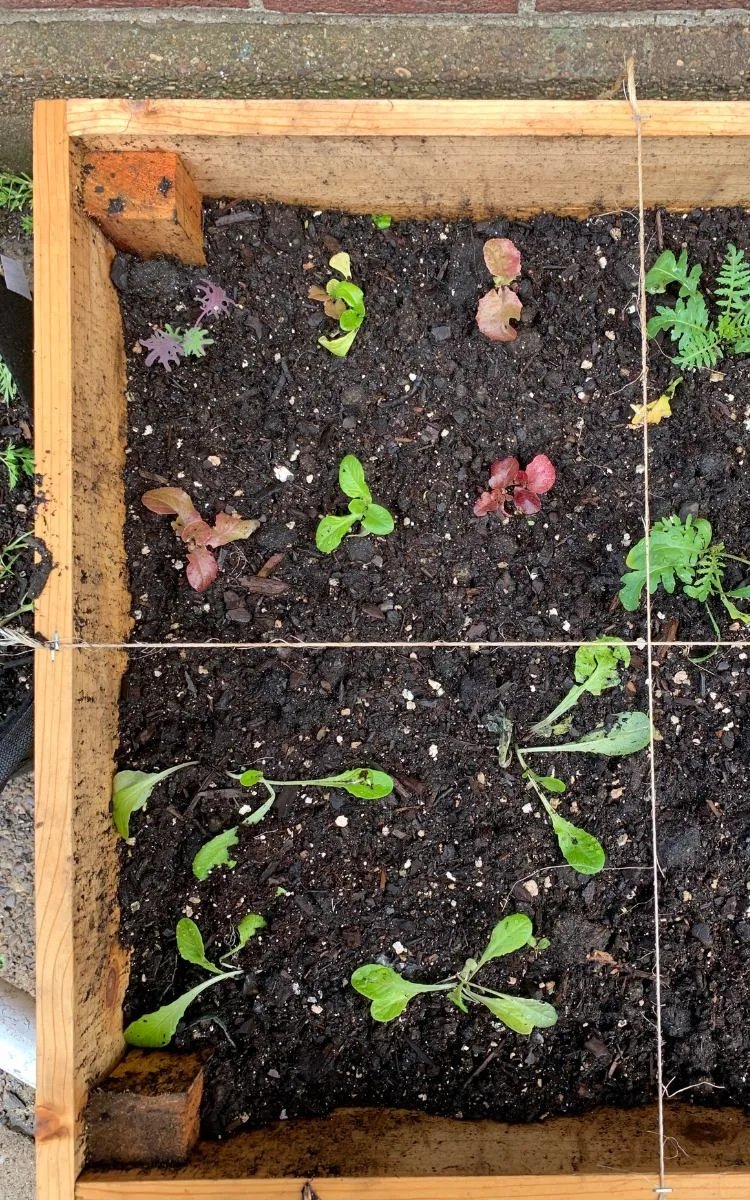
It’s much easier to control weeds in a raised bed.
There is more surface area for mulch, which will help keep out weeds.
Additionally, you have less ground space for weeds to grow so there are fewer weed seeds sprouting.
Finally, weed control fabric can be applied before the soil is added so that no weed seeds develop at all in your garden bed.
Soil Temperature Are More Ideal For Growing
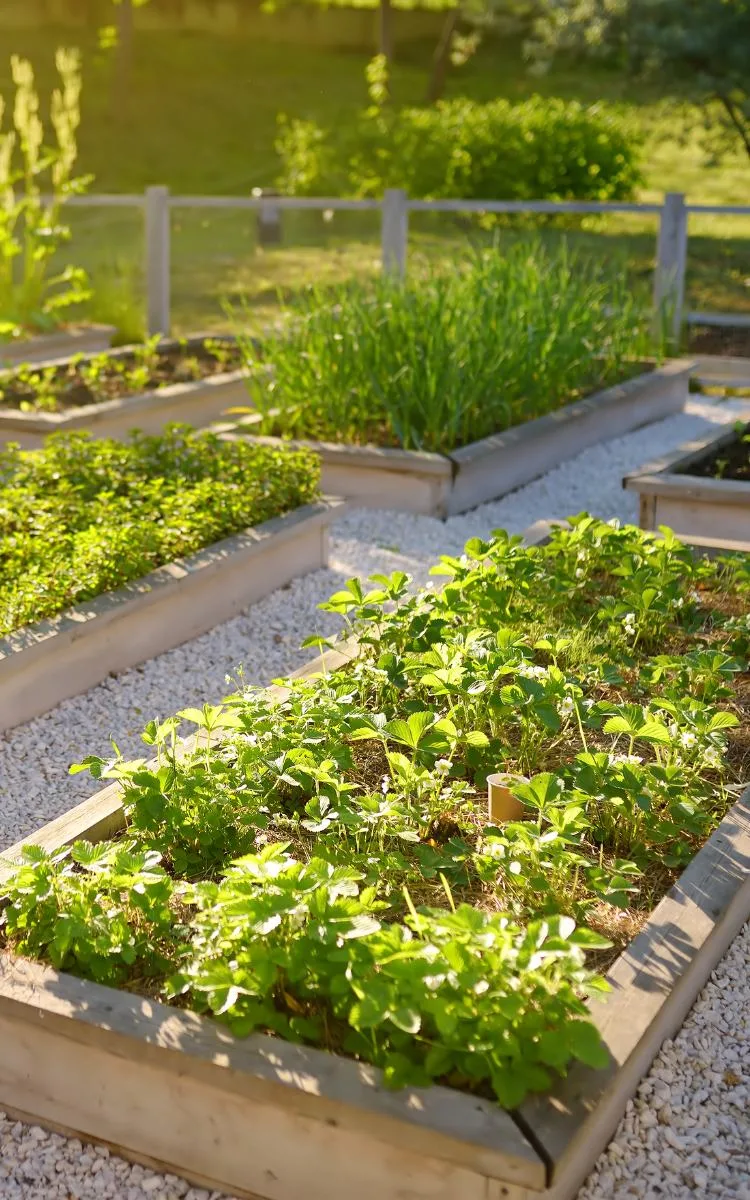
With raised garden beds, you’ll have warmer soil earlier in the spring.
This means your plants will benefit from warmer soiler earlier than if you were growing in the ground and you can plant your garden a little sooner.
You’ll also experience warmer soil for longer in your growing season.
Raised Garden Beds Are Easier To Tend
Another big advantage of raised garden beds is that they are much easier to tend, whether you’re in your 20s or 80s. There is no bending or crouching necessary to weed, water, plant, and harvest veggies.
And if you go with a waist-high bed (or even higher), then the task becomes that much easier.
If you’re watering by hand, you can use a watering can when it’s time for a drink. Or for an easy way to keep plants hydrated (and conserve water at the same time), try using a soaker hose system attached to a timer from your outdoor spigot.
You may also choose to lay mulch in the paths between beds and around plants once they’ve sprouted up — this will be much easier on your knees than kneeling down in between rows of plants and working on hands and knees!
You May Also Like: DIY $15 Compost Bin
Better Drainage, Especially For Soil Containing Clay
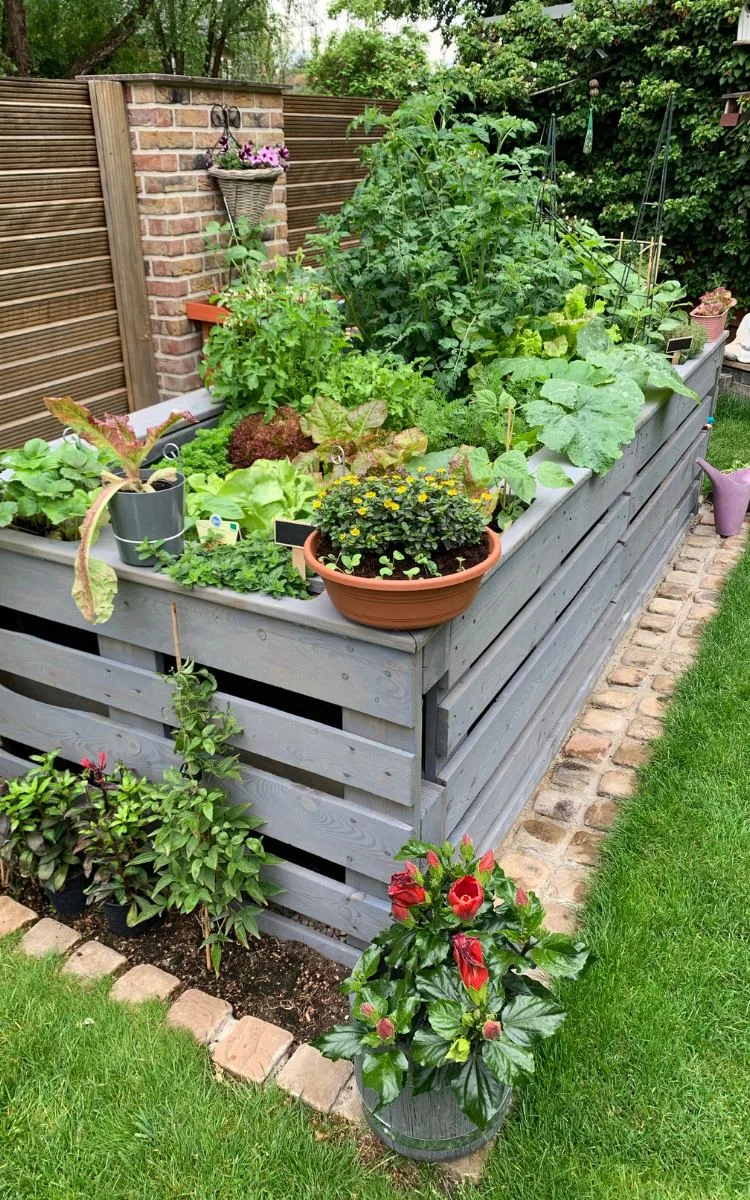
If you struggle with growing in your yard due to a higher clay composition in your soil, raised garden beds could help!
While your yard’s soil may not be ideal for gardening, using a raised garden bed with soil put in can be the answer to your problems.
Dogs Can’t ‘Water’ Your Plants…
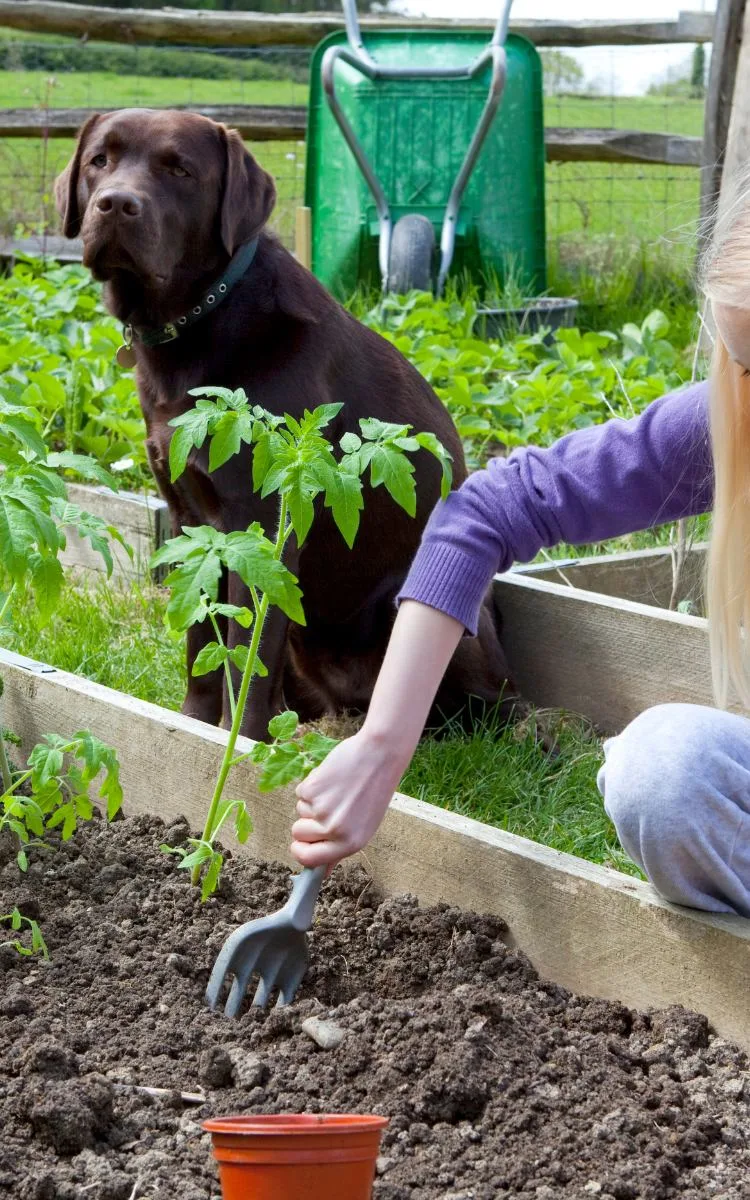
Because of the taller sides of your raised garden beds, your dogs will have a difficult, if not impossible, time peeing on your vegetable plants!
Pests Have A Harder Time Reaching your Plants

Raised garden beds make it more difficult for pests, like slugs and snails, to access your plants.
Some common garden pests include:
- slugs
- deer
- rabbits
- insects
If you add fencing around the perimeter of your raised bed, it will be even harder for them to get in.
If you choose to use a row cover over your bed, it will be nearly impossible for pests to find their way into your plants.
You can also use a netting or fencing along with a row cover if you want a triple layer of pest prevention.
You may also find that there are fewer weeds and other invasive plants in your raised garden beds than in ground-level gardens just because they are so much easier to maintain and keep under control.
If you do have a pest problem with animals like deer or rabbits, fastening some deer fence over your veggies might be a good idea to keep them at bay and to protect your plants.
Raised Garden Beds Aren’t Permanent
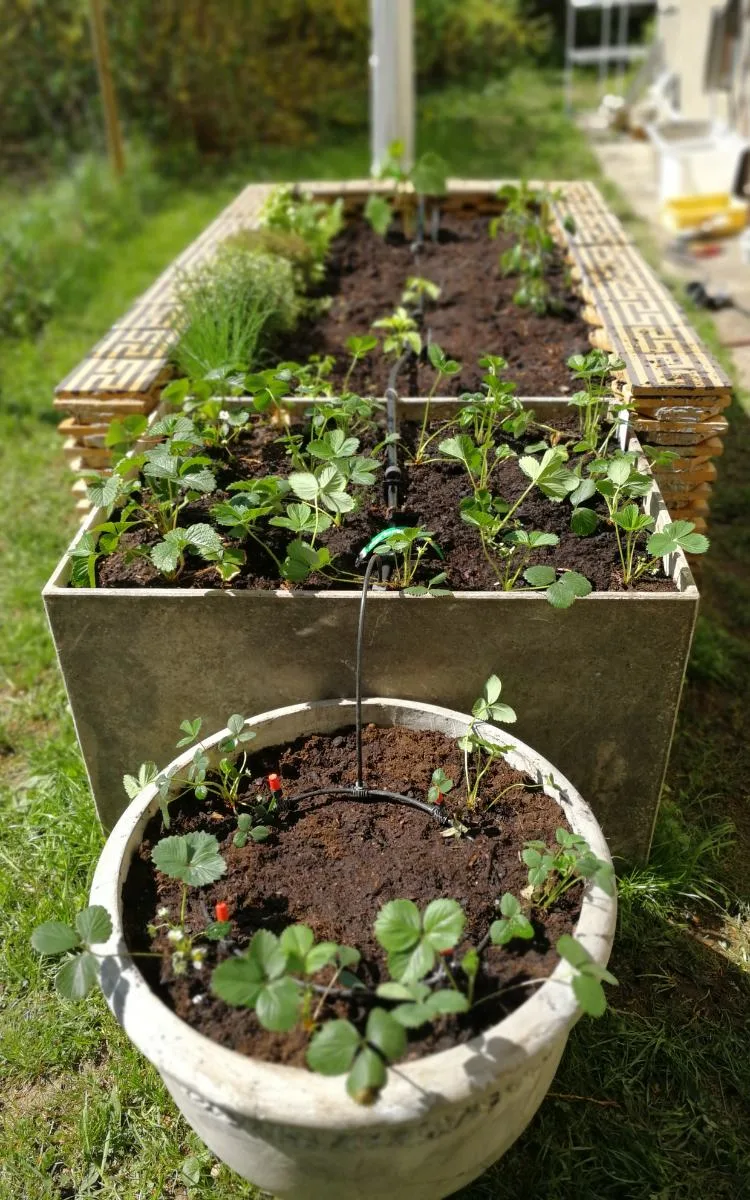
If you find yourself needing to disassemble your garden beds for any reason (maybe you’re renting and your landlord doesn’t approve of an in-ground garden or digging up grass, or you need to take them down for the winter season), raised garden beds can be somewhat easily taken down.
You can store excess soil from the year’s growing season in a barrel in the garage or a shed as well, so there isn’t any waste.
They’re Great For Beginner Gardeners
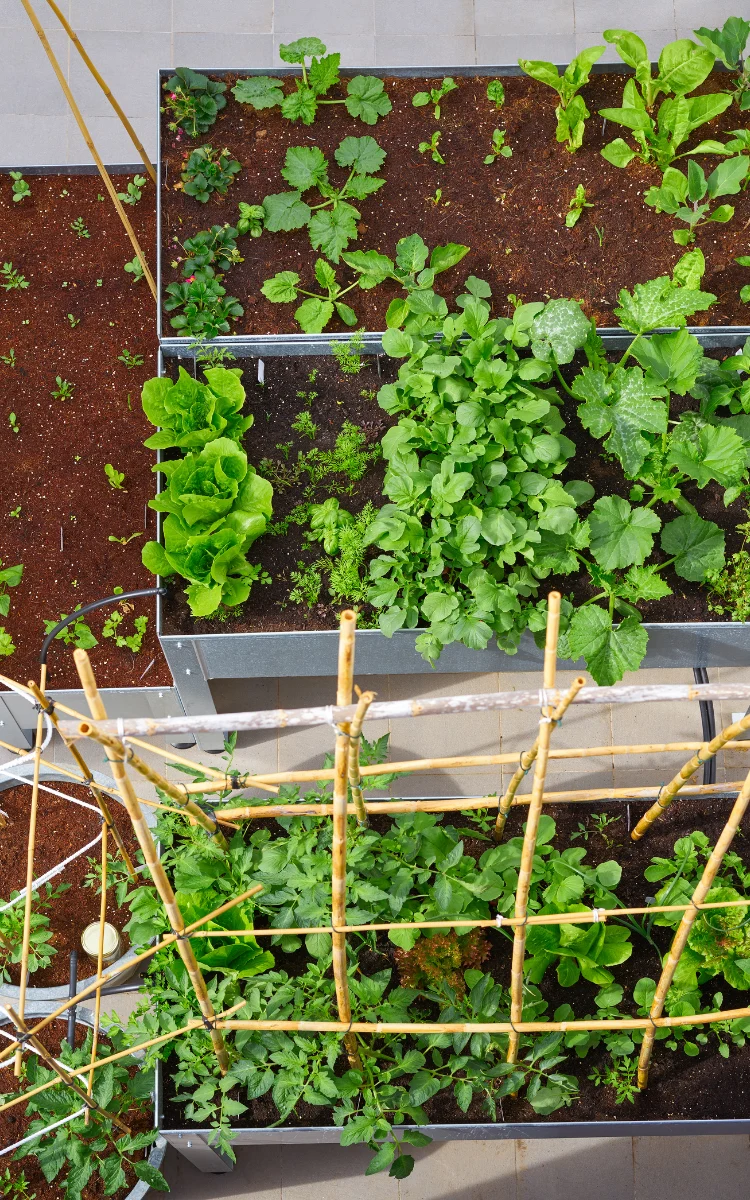
Raised garden beds are great for new gardeners because they’re easy to grow in, which can be really encouraging for someone just starting out.
You Can Control The pH And Any Soil Contaminants
If you aren’t sure if your soil is safe to grow in or you want to avoid possible soil contaminants in your garden, building or buying a raised garden bed is the answer for you!
You can control what soil you grow your vegetables in because you need to fill them up with your choice of compost and soil.
Types Of Raised Garden Beds
Here are some common types of garden beds you can consider using this season for an awesome backyard gardening experience…
Container Gardening
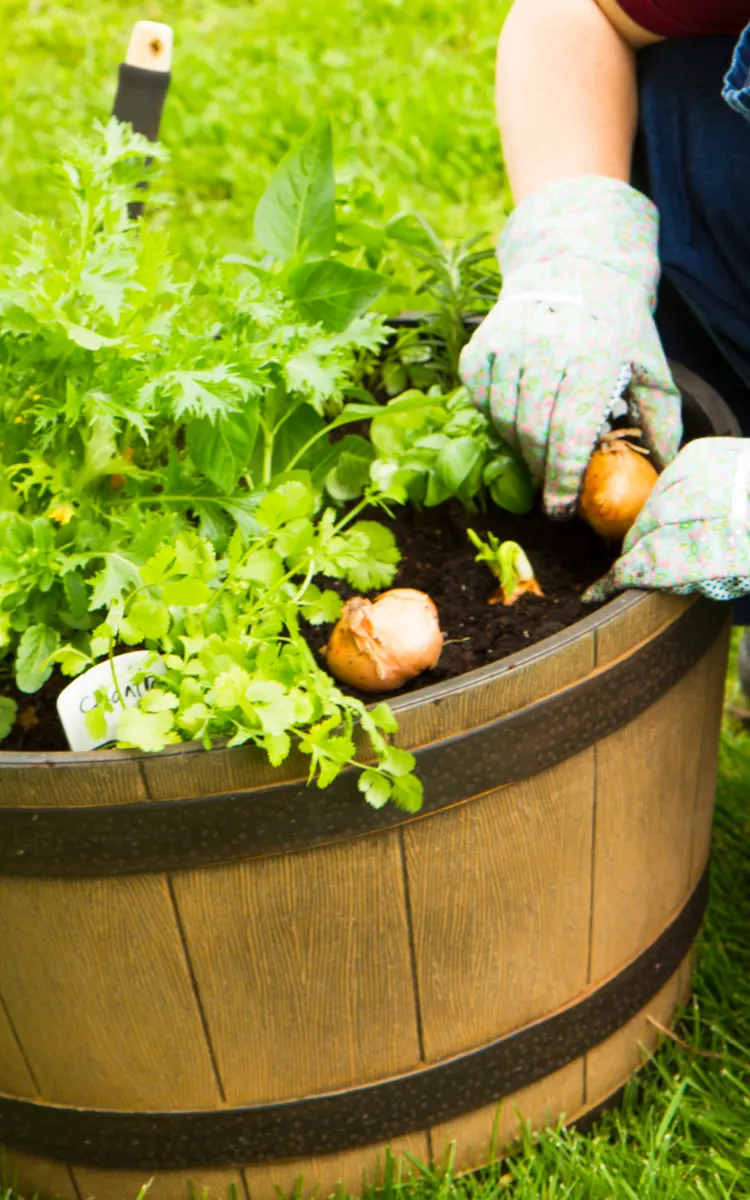
You’ve probably seen container gardening before, but the idea is instead of doing a whole bed, you grow individual plants in containers.
This is especially popular among home gardeners that enjoy growing potatoes!
I’ll be expanding on growing potatoes in containers this season.
According to The Spruce, here are some veggies you can grow in containers:
- tomatoes
- peas
- squash
- potatoes
- lettuce
- peppers
- cucumbers
…and more!
Here are some great beginner containers you can use to start your own container garden.
Plastic Raised Garden Beds (Vinyl)
Use these with or without the included grid, but plastic raised garden beds are a great option for your garden.
They are easy to clean, assemble, and can match the aesthetic you may be going for.
Maybe you want to match the siding on your house, or highlight the trim on your house with your garden beds!
Cedar Raised Garden Beds
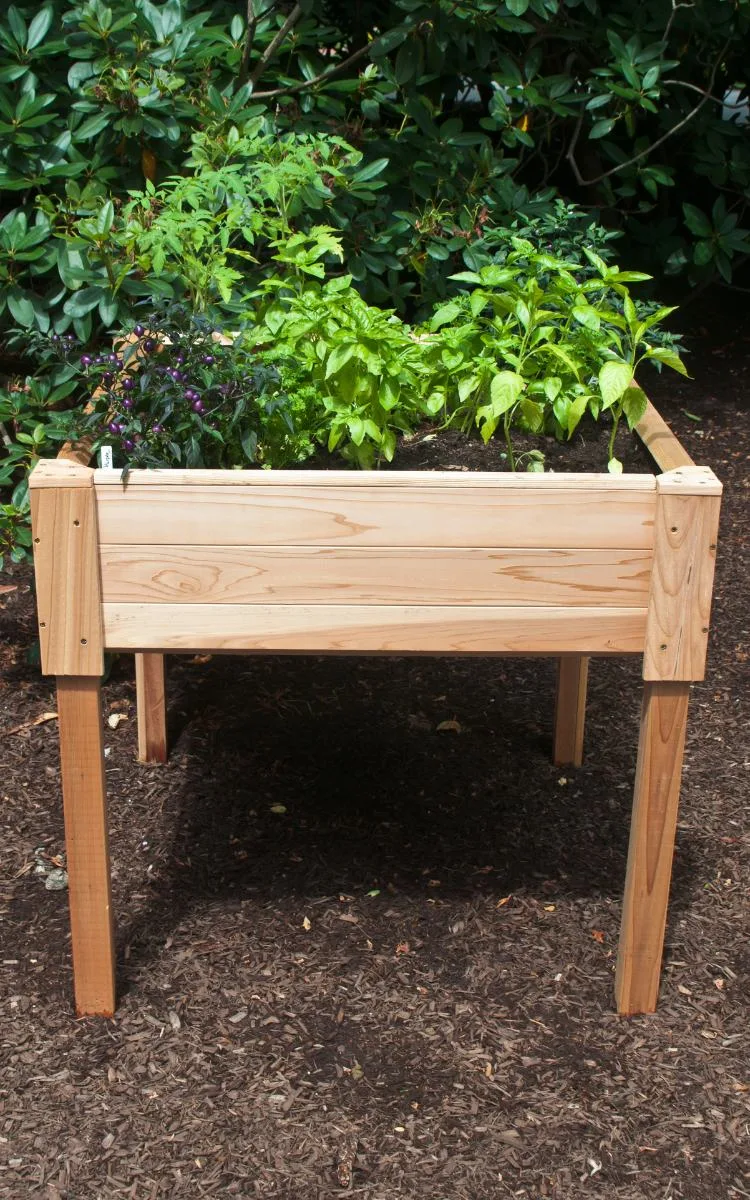
If you’re looking for natural garden beds that will resist rotting over a long period of time – cedar-raised garden beds would be a great option to consider.
Cedar garden beds are also naturally repel insects.
Shop our favorite cedar raised garden beds HERE.
Vertical Hydoponic Garden
Have you heard of the Lettuce Grow Farmstand?
While this system doesn’t use soil, per se, it’s a great space-saving option and yields a lot of the same types of plants your ground garden can, just in a vertical fashion!
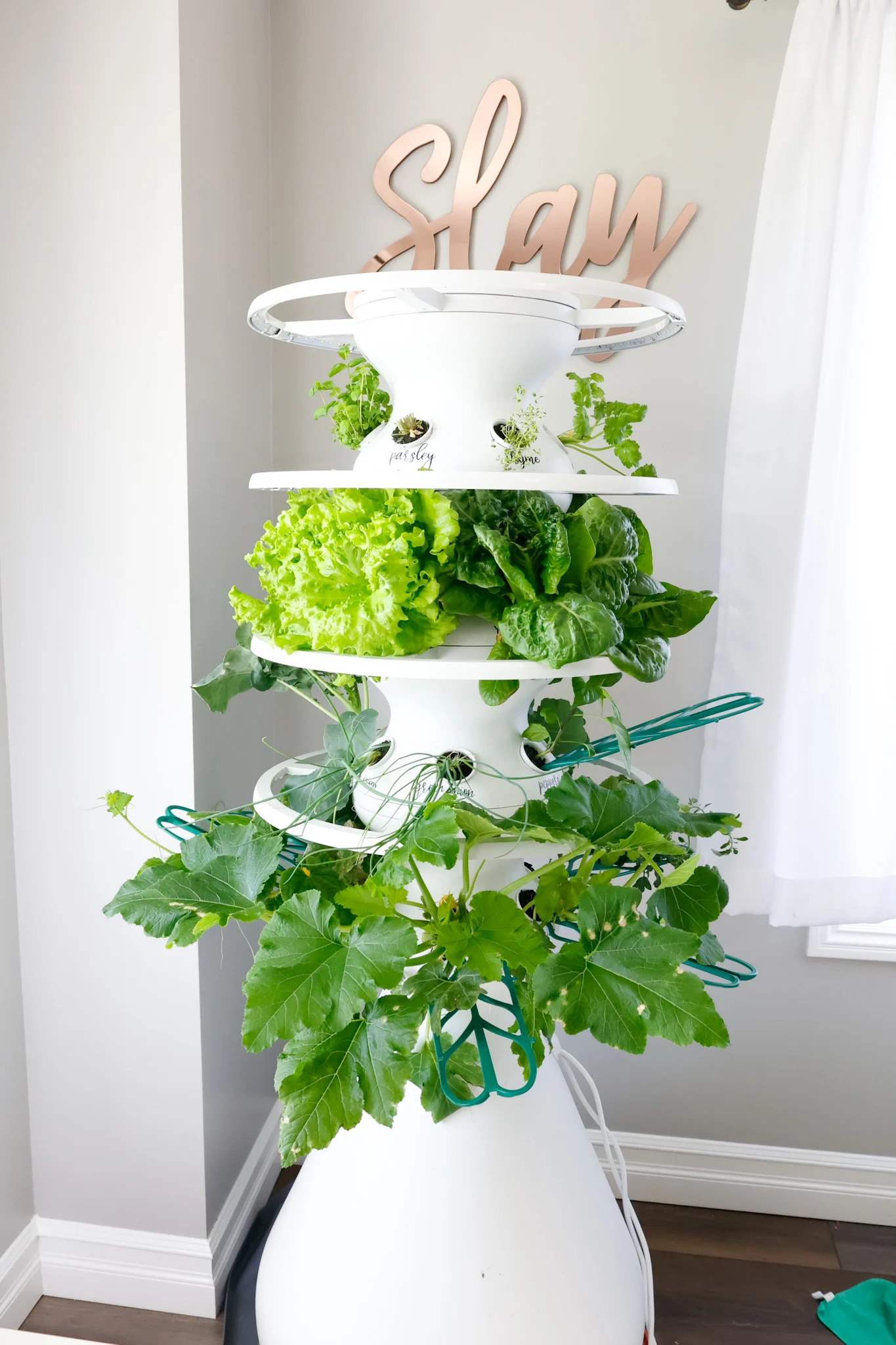
It uses a timer and pump to pump water from the tank up to a diffuser at the top, which showers nutrient water over the roots and recycles this water.
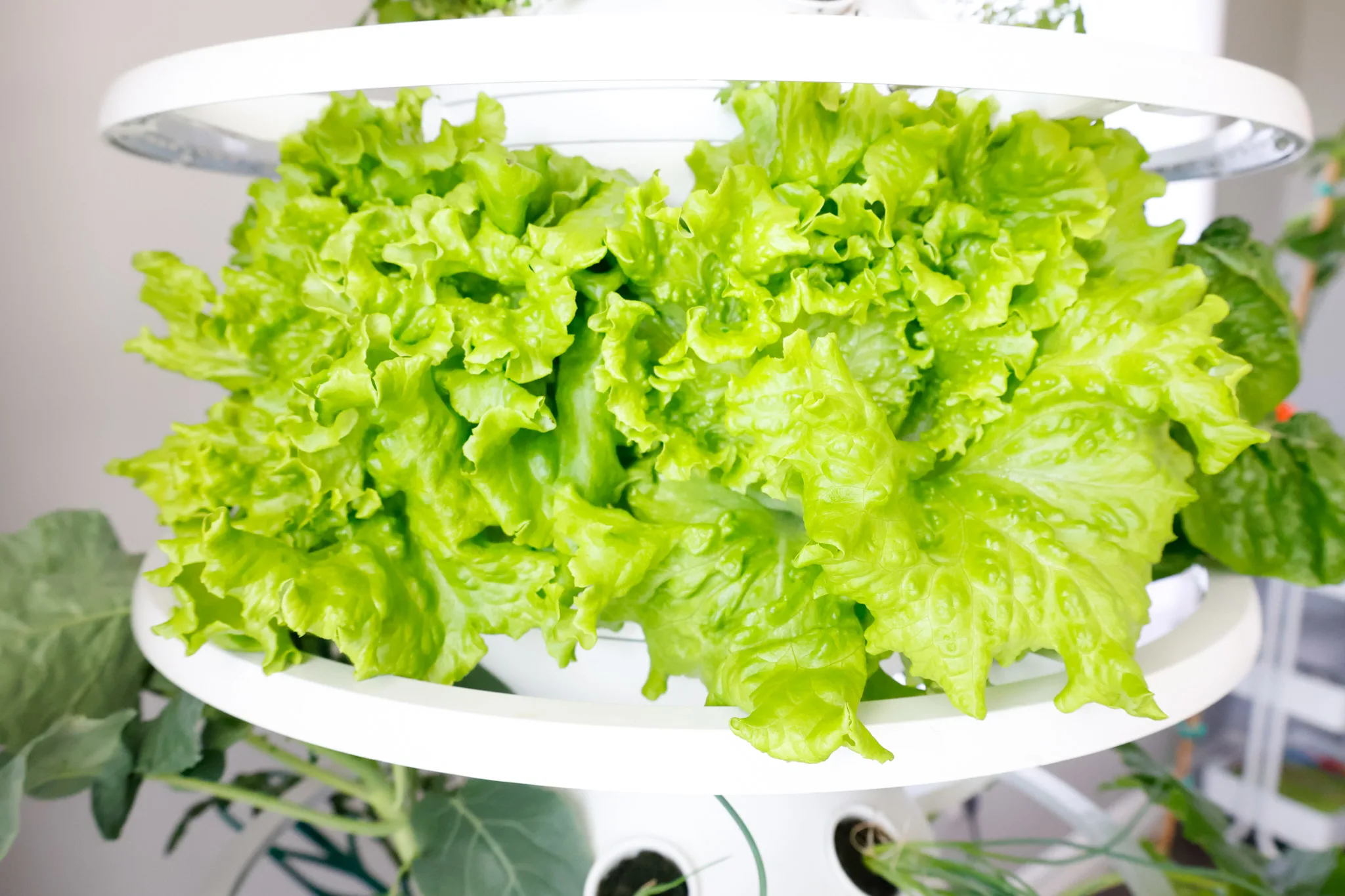
You can use this system indoors or outside, and read my initial review on the Farmstand HERE.
Do you plan on gardening with a raised garden bed this year? Let me know in the comments below!
*Post originally published May 2022, last updated May 2023.

